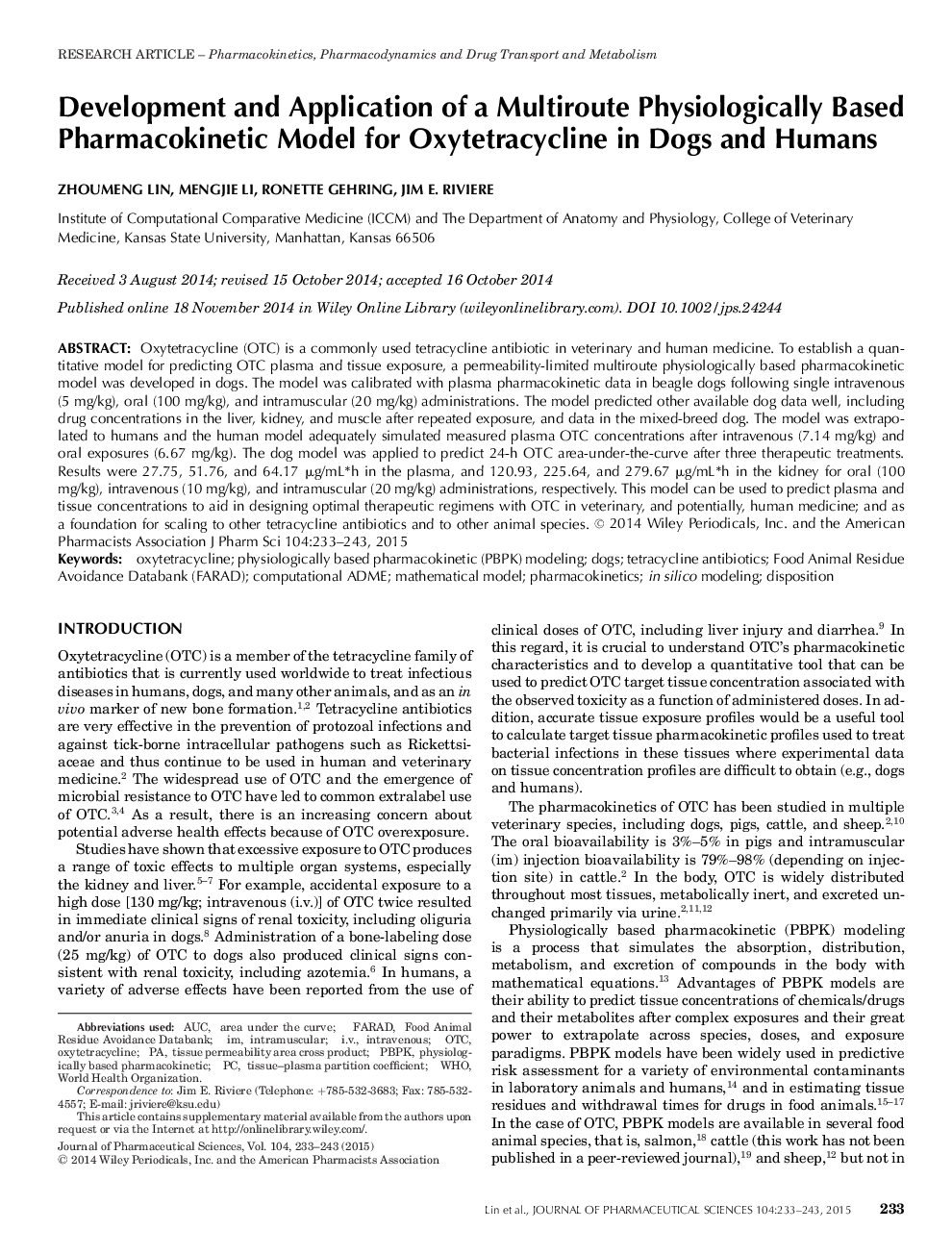| Article ID | Journal | Published Year | Pages | File Type |
|---|---|---|---|---|
| 2484639 | Journal of Pharmaceutical Sciences | 2015 | 11 Pages |
Abstract
Oxytetracycline (OTC) is a commonly used tetracycline antibiotic in veterinary and human medicine. To establish a quantitative model for predicting OTC plasma and tissue exposure, a permeability-limited multiroute physiologically based pharmacokinetic model was developed in dogs. The model was calibrated with plasma pharmacokinetic data in beagle dogs following single intravenous (5 mg/kg), oral (100 mg/kg), and intramuscular (20 mg/kg) administrations. The model predicted other available dog data well, including drug concentrations in the liver, kidney, and muscle after repeated exposure, and data in the mixed-breed dog. The model was extrapolated to humans and the human model adequately simulated measured plasma OTC concentrations after intravenous (7.14 mg/kg) and oral exposures (6.67 mg/kg). The dog model was applied to predict 24-h OTC area-under-the-curve after three therapeutic treatments. Results were 27.75, 51.76, and 64.17 μg/mL*h in the plasma, and 120.93, 225.64, and 279.67 μg/mL*h in the kidney for oral (100 mg/kg), intravenous (10 mg/kg), and intramuscular (20 mg/kg) administrations, respectively. This model can be used to predict plasma and tissue concentrations to aid in designing optimal therapeutic regimens with OTC in veterinary, and potentially, human medicine; and as a foundation for scaling to other tetracycline antibiotics and to other animal species.
Keywords
Related Topics
Health Sciences
Pharmacology, Toxicology and Pharmaceutical Science
Drug Discovery
Authors
Zhoumeng Lin, Mengjie Li, Ronette Gehring, Jim E. Riviere,
